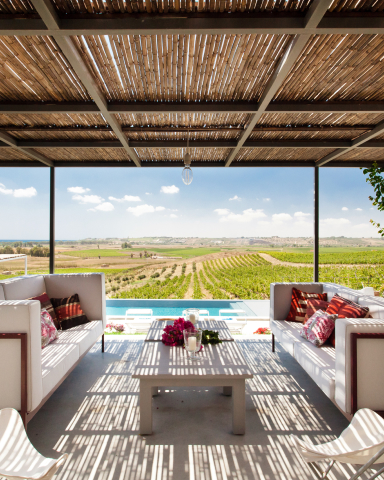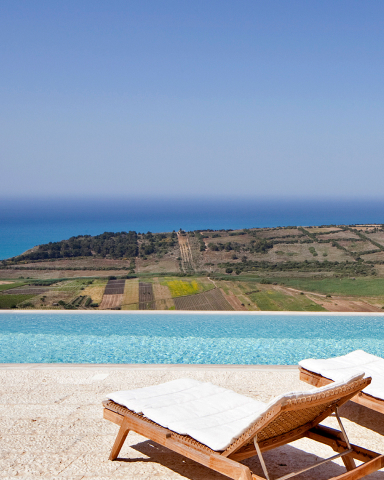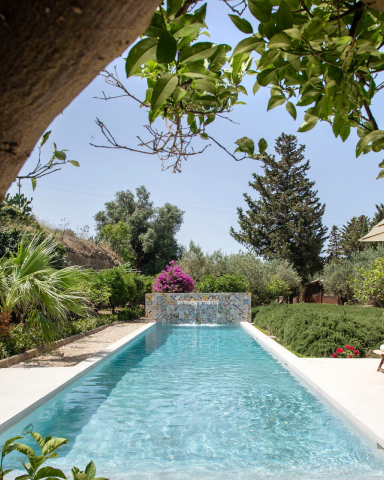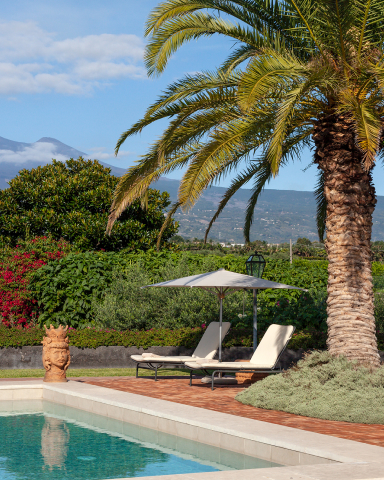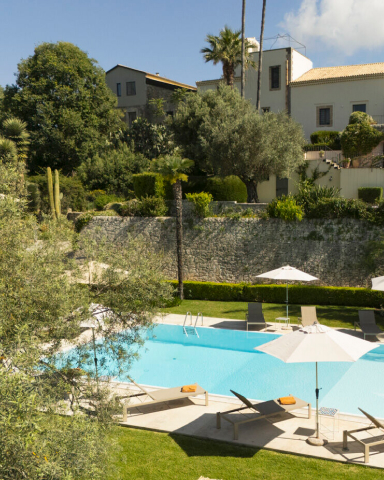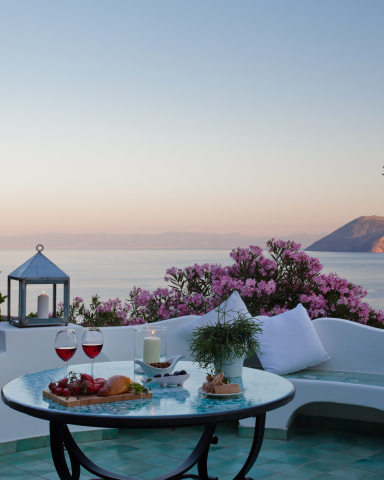Events in Sicily: A Complete Guide to the Island's Most Captivating Festivals and Cultural Celebrations

The Cultural Heartbeat of Sicily
Sicily's event calendar is as complex and layered as its history. This island, which has been shaped by Greeks, Romans, Arabs, Normans, and Spanish influences, celebrates its multicultural heritage through a rich program of festivals that span the entire year. Each celebration tells a story – of faith, of tradition, of the land's bounty, and of the passionate spirit of the Sicilian people.
The island's events can be broadly categorized into several distinct types: religious festivals that demonstrate the deep Catholic faith of the population, food festivals (sagre) that celebrate regional specialties, cultural events that showcase Sicily's artistic heritage, and seasonal celebrations that mark the changing rhythms of Mediterranean life. Understanding these different categories helps visitors appreciate not just what they're witnessing, but why these events hold such profound meaning for local communities.

Gastronomic Festivals: Celebrating Sicily's Culinary Heritage
The Legendary CousCous Fest
San Vito Lo Capo's CousCous Fest exemplifies Sicily's ability to celebrate its multicultural heritage through food. This internationally acclaimed festival brings together chefs from across the Mediterranean and North Africa to compete in preparing couscous, a dish that perfectly embodies Sicily's Arab heritage. The festival creates a unique atmosphere where culinary traditions from Algeria, Tunisia, Morocco, and other nations blend with Sicilian hospitality.
The competition aspect is serious – professional chefs arrive with their teams and secret recipes, creating a culinary olympics that showcases the infinite variations possible with this apparently simple dish. But the festival extends far beyond competition, featuring live music, traditional dance performances, and a carnival atmosphere that makes it one of Sicily's most beloved international events.
Sagra del Pistacchio di Bronte
The pistachio festival in Bronte celebrates what many consider the world's finest pistachios. Protected by DOP (Protected Designation of Origin) status, Bronte pistachios are prized for their distinctive flavor and deep purple color. The festival showcases the versatility of this precious nut through an astounding array of preparations – from traditional sweets and gelato to innovative pasta dishes and even pistachio-infused wines.
The festival also provides insight into the challenging cultivation of pistachios on the volcanic slopes of Mount Etna, where the trees grow in the ancient lava fields called sciare. The biennial harvest cycle means that pistachio production is inherently limited, making these festivals particularly special celebrations of a truly unique agricultural product.
Artichoke Festival in Cerda
The village of Cerda's annual artichoke festival on April 25th demonstrates how even humble vegetables can become the centerpiece of joyous celebration. Cerda's artichokes, known for their tender hearts and delicate flavor, are prepared in dozens of different ways – grilled, fried, stuffed, and incorporated into pasta dishes, risottos, and traditional Sicilian preparations.
The festival combines culinary celebration with cultural programming, featuring folk music performances, traditional dance, and market stalls selling not just artichokes but the full range of local agricultural products. It's an excellent example of how Sicily's food festivals serve multiple purposes – celebrating local produce, preserving traditional recipes, and bringing communities together in shared appreciation of their cultural heritage.

Cultural Events: Sicily's Artistic Renaissance
The Syracuse Greek Theatre Festival
Few cultural events can match the emotional impact of witnessing ancient Greek drama performed in the very theatre where it was first presented over two millennia ago. The Syracuse Greek Theatre Festival, running from May through July, transforms the ancient limestone amphitheatre into a living stage where classical works by Sophocles, Euripides, and Aristophanes come alive under the Sicilian stars.
The theatre itself is a marvel – carved directly into the hillside, its 59 rows once accommodated 15,000 spectators. Today's performances maintain the authentic atmosphere while incorporating modern staging techniques that enhance rather than overshadow the timeless power of these classical works. The 2025 season promises to be particularly spectacular, featuring Elektra and Oedipus at Colonus by Sophocles, Lysistrata by Aristophanes, and a staged version of the Iliad.
Taormina's Cultural Festivals
Taormina's ancient Greco-Roman theatre provides another stunning venue for cultural events. The Taormina Film Festival brings international cinema to this magnificent setting, while the broader Taormina Festival throughout July and August presents an eclectic mix of opera, jazz, rock, and classical concerts. The combination of world-class performances and the theatre's breathtaking setting – with Mount Etna visible in the distance and the Mediterranean stretching to the horizon – creates an unforgettable cultural experience.
The Segesta Theatre Festival
The Archaeological Site of Segesta offers yet another spectacular venue for cultural events. The temple and theatre, set in rolling hills covered with wild fennel and ancient olive groves, provide an atmospheric backdrop for a month-long festival of Greek classics, contemporary drama, and musical performances. The isolation of the site, accessed by a scenic drive through the Sicilian countryside, adds to the sense of discovering something truly special.
Seasonal Celebrations: Marking the Rhythms of Mediterranean Life
Spring: The Infiorata di Noto
The Infiorata di Noto transforms one of Sicily's most beautiful baroque streets into a living canvas of flower petals. Each year on the third weekend of May, Via Nicolaci becomes the stage for intricate petal mosaics created by artists from around the world. The 2025 theme, "Sicilians in America," promises to explore the island's significant contribution to American culture through the lens of emigration and cultural exchange.
The festival combines artistic creation with cultural celebration, featuring parades, traditional music, and the joyous chaos of local children who are traditionally allowed to run through the floral artworks on Monday morning – a symbolic gesture representing destruction and renewal that captures the cyclical nature of life itself.
Summer: The Luminous Scala di Caltagirone
The illumination of Caltagirone's famous ceramic staircase on July 24th and 25th creates one of Sicily's most visually spectacular events. The 142 steps of the Scalinata di Santa Maria del Monte are adorned with hundreds of small oil lamps, creating intricate patterns that celebrate the town's ceramic-making heritage. The designs change each year, but the effect is always magical – a glowing pathway that seems to connect earth and sky.
Autumn: Wine Harvest Celebrations
Sicily's autumn events celebrate the island's increasingly acclaimed wine industry. The Sagra dell'Uva in Chiaramonte Gulfi marks the grape harvest with tastings of must (unfermented grape juice), wine, and traditional foods. Meanwhile, Etna's wine festivals in villages like Milo and Linguaglossa showcase the unique volcanic terroir that produces some of Sicily's most distinctive wines.
Winter: Christmas Traditions
Sicily's Christmas celebrations begin on December 8th with the decoration of homes and the creation of elaborate nativity scenes. The living nativity in Custonaci's Mangiapane Cave represents one of the most spectacular Christmas events, where an entire village is recreated in a prehistoric cave setting. The tradition of the luminari on Christmas Eve, where bonfires are lit to keep baby Jesus warm, continues in mountain villages throughout the Madonie.
Planning Your Visit: The Thinking Traveller's Villa Collections
Palermo and Western Sicily Villas
Our carefully curated selection of villas in western Sicily provides the perfect base for exploring the region's most significant events. From the Festa di Sant'Agata in nearby Catania to the CousCous Fest in San Vito Lo Capo, these properties offer elegant accommodation within easy reach of major celebrations.
Taormina and Eastern Sicily Collection
Our Taormina area villas offer unparalleled access to Sicily's most prestigious cultural events.
For those interested in the Syracuse Greek Theatre Festival, our villas in the southeast offer elegant retreats after evenings of classical drama. These properties combine historical character with modern amenities, providing the perfect balance of authenticity and comfort that discerning travelers seek.
Mount Etna and Central Sicily Properties
Our Mount Etna collection places guests at the heart of Sicily's wine and food festival circuit. .
These properties are particularly well-suited for visitors attending the Sagra del Pistacchio in Bronte or the various wine festivals that dot the Etna region throughout the autumn harvest season. The combination of volcanic landscapes, vineyard visits, and festival attendance creates a uniquely Sicilian experience.
Southern Sicily and the Baroque Triangle
Our villas in the baroque triangle of Noto, Modica, and Ragusa provide access to some of Sicily's most beautiful Easter celebrations and spring festivals. The Infiorata di Noto becomes easily accessible from these properties, while the chocolate festival in Modica and various food sagre throughout the region offer year-round cultural experiences.
Practical Considerations for Festival Attendance
Booking and Accommodation
Sicily's most popular festivals can draw enormous crowds, making advance planning essential. The Festa di Sant'Agata in Catania, for example, transforms the city into a mass pilgrimage site, with accommodation booking up months in advance. Our villa concierge services can assist with not only securing the best properties but also arranging transportation and providing local insights that enhance your festival experience.
The timing of many religious festivals is fixed, but weather can affect some outdoor events. Our local teams monitor conditions and can suggest alternative experiences if necessary, ensuring that your Sicilian adventure remains memorable regardless of circumstances.
Transportation and Logistics
Many of Sicily's best festivals take place in smaller towns and villages where parking can be challenging during events. Our villa services include transportation arrangements that eliminate the stress of navigation and parking, allowing you to focus entirely on experiencing these remarkable celebrations.
For multiple festival attendance, our itinerary planning service can create seamless experiences that combine several events with appropriate rest periods and complementary activities. This approach prevents festival fatigue while maximizing your exposure to Sicily's diverse cultural offerings.
Cultural Sensitivity and Participation
Sicily's religious festivals are genuine expressions of faith and community identity, not merely tourist attractions. Understanding the appropriate behavior and dress codes enhances both your experience and local acceptance. Our pre-arrival briefings include cultural context that helps visitors participate respectfully in these meaningful celebrations.
Many festivals welcome visitor participation – from helping to carry processional items to joining in traditional dances. Our local contacts can facilitate these experiences where appropriate, creating memories that extend far beyond mere observation.
Frequently Asked Questions
Conclusion: Sicily's Events as Transformative Experiences
Events in Sicily offer far more than entertainment – they provide windows into the soul of an island whose cultural richness has been shaped by millennia of diverse influences. From the spiritual intensity of religious processions to the joyous celebration of local foods, from the refined elegance of ancient Greek drama to the warm hospitality of village festivals, Sicily's events create connections between past and present, between visitor and local, between the sacred and the everyday.
The island's festival calendar reflects the rhythms of Mediterranean life – the agricultural cycles that have sustained communities for centuries, the religious observances that provide meaning and continuity, and the seasonal celebrations that mark the passage of time. Participating in these events offers visitors authentic experiences that commercial tourism cannot replicate, creating memories that continue to resonate long after the return home.
Sicily's events provide intellectual and emotional engagement with a culture that has successfully preserved its traditions while embracing modernity. The opportunity to witness ancient Greek drama in its original setting, to participate in religious processions that have continued for centuries, or to celebrate local foods that reflect the island's agricultural heritage creates a travel experience of unusual depth and authenticity.
Our carefully curated villa collections ensure that your experience of Sicily's events is enhanced by accommodation that reflects the island's character while providing modern comfort. From properties that offer direct access to major festivals to retreats that provide peaceful restoration after intensive cultural experiences, our villas serve as more than mere accommodation – they become part of your Sicilian story.
The investment in experiencing Sicily's events pays dividends that extend far beyond the duration of any single festival. The cultural understanding gained, the connections made, and the memories created through authentic participation in these remarkable celebrations enrich not just your travel experience but your understanding of human culture itself. In Sicily, every festival is an invitation to connect with something deeper – with history, with community, with the fundamental human need for celebration and meaning.

We're Villa Matchmakers
Because our local experts have personally visited each of our destinations, we know exactly what makes them special. Tell us what your ultimate villa holiday looks like, and allow us take care of the rest.
